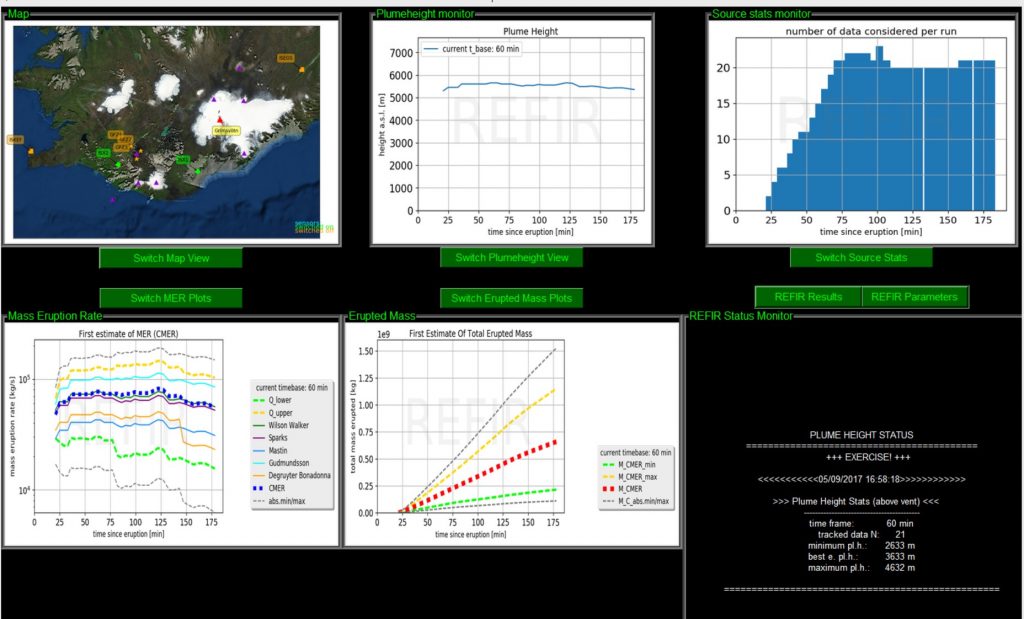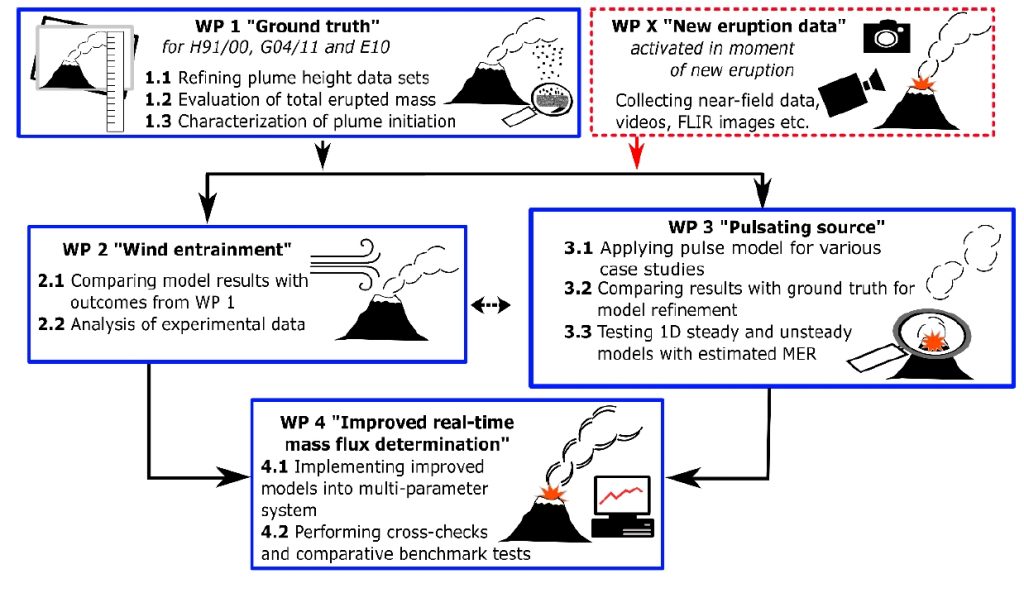Objectives and work packages of MAXI-Plume
- Objective 1: Providing “ground truth” data sets as empirical base of unprecedented precision to both test and improve the accuracy of existing mass flux models. For this purpose time-dependent plume heights H(t) and total erupted mass data M(t) for the opening explosive phases of Hekla 1991 and 2000, for Grímsvötn 2004, Eyjafjallajökull 2010, and Grímsvötn 2011 are collected, complemented, verified and corrected.
- - Objective 2: Studying the wind effects on evolution dynamics and height of ash plumes using meteorological data for the five case studies, combined with those of ash pulse experiments. This includes constraining the air entrainment rates and their dependencies on wind speeds in order to develop an improved mass flux prediction applicable under realistic future scenarios in Iceland.
- - Objective 3: Studying the role of pulsating behavior by apply a recently developed pulse model for Eyjafjallajökull 2010 [1] to specific historic eruptions to better understand the role of pulsating behavior. Using the observed unsteady source conditions to test both steady and unsteady 1D plume models.
- - Objective 4: Apply the knowledge obtained to enhance and optimize the monitoring software REFIR [2]. During an ongoing eruption it is the aim to provide the volcanological community and other stakeholders with refined mass flux estimates in near-real time, according to continuously updated field data.

Screenshot of monitoring system REFIR taken during an eruption exercise. The depicted case shows a simulated eruption of Eyjafjallajökull [2].
A fifth WP (“X”) will be implemented - to make full use of the opportunity - if an explosive eruption occurs during the duration of this project.

